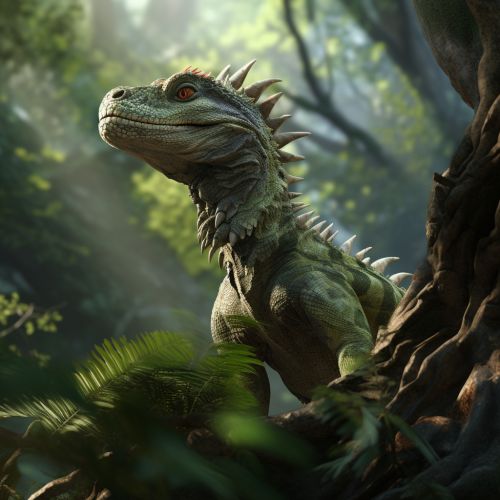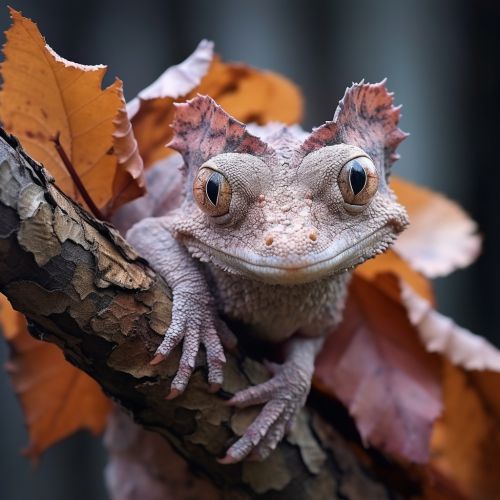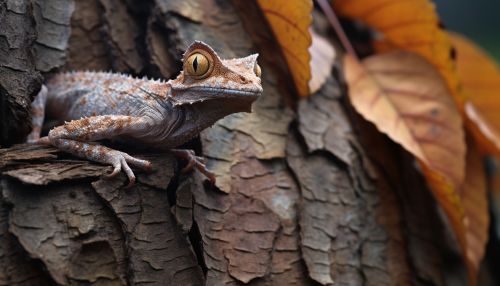The Evolution of Cryptic Coloration in Reptiles
Introduction
Cryptic coloration, or camouflage, is a survival strategy employed by many organisms, including reptiles. This article explores the evolution of cryptic coloration in reptiles, delving into the intricate mechanisms and evolutionary pressures that have shaped this fascinating aspect of reptilian biology.
Evolutionary Origins of Cryptic Coloration
The origins of cryptic coloration in reptiles can be traced back to the Mesozoic era, often referred to as the Age of Reptiles. During this period, reptiles diversified into a myriad of forms, many of which exhibited cryptic coloration as a means of evading predators or ambushing prey.


Mechanisms of Cryptic Coloration
Cryptic coloration in reptiles is primarily achieved through two mechanisms: pigmentary coloration and structural coloration.
Pigmentary Coloration
Pigmentary coloration involves the production of pigments that absorb certain wavelengths of light, thereby influencing the color of the organism. In reptiles, this is primarily achieved through the production of melanin, a pigment responsible for brown and black hues, and various types of carotenoids and pteridines, which produce red, orange, and yellow colors.
Structural Coloration
Structural coloration, on the other hand, involves the manipulation of light by the physical structures within an organism's tissues. In reptiles, this is often achieved through the presence of specialized cells known as iridophores, which contain layers of crystalline structures that reflect and refract light, producing a variety of colors.
Evolutionary Pressures Shaping Cryptic Coloration
The evolution of cryptic coloration in reptiles has been driven by a variety of evolutionary pressures, including predation, competition, and sexual selection.
Predation
Predation is perhaps the most significant driver of cryptic coloration in reptiles. By blending in with their environment, reptiles can avoid detection by predators, increasing their chances of survival.
Competition
Competition for resources can also drive the evolution of cryptic coloration. In environments where resources are scarce, the ability to blend in with the surroundings can give an individual a competitive edge, allowing it to secure resources while avoiding detection by competitors.
Sexual Selection
Sexual selection can also influence the evolution of cryptic coloration in reptiles. In some species, males with the most elaborate or effective camouflage patterns are more likely to be chosen by females, driving the evolution of increasingly complex and effective cryptic coloration patterns.
Examples of Cryptic Coloration in Reptiles
There are countless examples of cryptic coloration in reptiles, ranging from the subtle to the spectacular.
Chameleons
Perhaps the most iconic example of cryptic coloration in reptiles is the chameleon. Chameleons are renowned for their ability to change color, a trait that is used not only for camouflage but also for communication and thermoregulation.
Leaf-tailed Geckos
Leaf-tailed geckos are another spectacular example of cryptic coloration in reptiles. These geckos have evolved a flattened, leaf-like tail and a body coloration that closely matches the bark of trees, allowing them to blend in seamlessly with their forest habitats.


Conclusion
The evolution of cryptic coloration in reptiles is a complex and fascinating process, shaped by a myriad of evolutionary pressures and manifested in a stunning array of forms. From the subtle hues of desert-dwelling lizards to the dramatic color changes of chameleons, cryptic coloration is a testament to the power of evolution and the survival strategies it engenders.
